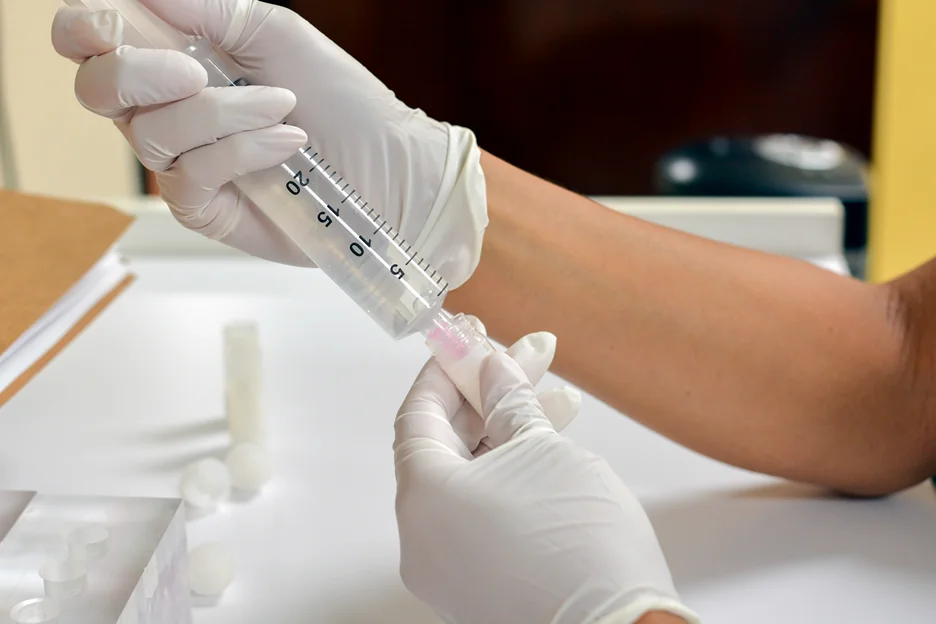Learn how exosomes could revolutionize medical treatments and improve overall health.
Curious about exosomes and their impact on cell-to-cell communication and disease?
In this guide, you’ll uncover the intricate world of exosomes, from their biogenesis to their potential in medicine and technology.
Explore their role in intercellular messaging, disease diagnostics, cancer research, and therapeutic delivery.
Whether you’re a medical professional, researcher, or simply intrigued by their potential, this article will provide you with the essential knowledge.
Get ready to unravel the mysteries of exosomes and stay updated on the latest developments in this rapidly evolving field.
What Are Exosomes?
- Exosomes are small vesicles released from cells that play a crucial role in intercellular communication and disease transmission.
- They contain diverse biomolecules such as proteins, RNAs, and lipids, which can vary based on their cell of origin.
- Exosomes have significant implications in various fields, including cancer research, diagnostics, and therapeutics.
- Ongoing research aims to understand exosome heterogeneity, biogenesis, and their roles in intercellular communication, opening up potential applications in medicine and technology.
Exosome Biogenesis and Composition

Exosomes are formed within cells when multivesicular bodies (MVBs) fuse with the plasma membrane, releasing small vesicles known as exosomes into the extracellular space. These exosome vesicles play a crucial role in intercellular communication and disease transmission.
Their biogenesis and composition offer insight into their significance. Exosomes contain diverse constituents, including proteins, lipids, nucleic acids, amino acids, and metabolites, reflecting their origin. Their protein and lipid composition influences their pharmacokinetic properties, making them valuable in disease diagnostics and therapeutics.
Exosomes are being investigated for their potential in cancer research and therapy due to their role in tumor development and metastasis. They can also be engineered to deliver therapeutic payloads, holding promise in various medical conditions. Understanding exosome biogenesis and composition is essential in unlocking their full potential for biomedical applications.
Explore the exciting potential of exosomes in medical advancements with Face Med Store’s innovative products.
Role of Exosomes in Intercellular Communication
By facilitating the transfer of biomolecules between cells, exosomes play a crucial role in intercellular communication, allowing for the exchange of essential information and signaling molecules.
Exosomes are small membrane-bound vesicles that transport proteins, RNAs, and lipids, enabling cell signaling and coordination. They serve as carriers of biomolecules, such as proteins and nucleic acids, facilitating intercellular communication and influencing various cellular processes.
Exosomes are involved in cell signaling and are crucial for the delivery of regulatory molecules between cells, contributing to the maintenance of cellular homeostasis and response to external stimuli.
They are pivotal in maintaining the cellular dialogue, influencing cellular behavior, and fostering a cohesive environment for the effective functioning of biological systems.
These tiny vesicles act as messengers, ensuring that essential information reaches the right recipient cells, thereby playing a vital role in coordinating various physiological processes.
Exosomes in Disease Diagnostics

In disease diagnostics, exosomes serve as carriers of biomolecules, playing a crucial role in the transmission of disease-related factors between cells.
These small vesicles, ranging from 30–200 nm in diameter, contain proteins, RNAs, and lipids, making them valuable biomarkers for various diseases, including cancer.
Tumor cells release exosomes at higher rates, influencing tumor development and metastasis. This has led to investigations into exosomes for early cancer detection, disease progression monitoring, and targeted therapeutics.
Exosomes can be isolated using methods like precipitation with polymers or commercial products, and their characterization involves techniques such as electron microscopy.
They hold promise in disease diagnosis and prognosis, particularly in cancer, and ongoing research aims to understand their roles in intercellular communication and disease transmission.
As a result, exosomes are becoming increasingly important in the field of disease diagnostics and are paving the way for innovative diagnostic and therapeutic approaches.
Implications of Exosomes in Cancer Research
Exosomes, these minuscule, membrane-bound vesicles, serve as the unsung heroes of intercellular communication, deftly shuttling biomolecules between neighboring cells like couriers of vital information.
What’s even more intriguing is that tumor cells seem to be fervent exosome producers, ejecting them into the biological arena at an accelerated pace. This prolific release of exosomes has far-reaching consequences, casting a significant shadow over tumor progression and metastatic journeys.
But that’s not all – exosomes are under scrutiny for their potential as early detection tools for cancer, monitoring the progression of this menacing disease, and even as the linchpin in targeted therapeutic strategies.
These tiny vesicles hold the key to unlocking many secrets in the world of cancer research. They offer insights into the intricacies of cancer cell biology, microvesicles, and the intricate dance of intercellular communication.
What truly makes them shine like a beacon of hope is their versatility. Exosomes aren’t limited to the realm of oncology alone; their applications span across various clinical domains, including cancer, making them a subject of burgeoning interest for researchers and clinicians alike.
Exosome Engineering for Therapeutic Delivery

How can you engineer exosomes for targeted delivery of therapeutic payloads to address specific medical conditions and improve treatment outcomes?
Exosome engineering involves modifying these small vesicles to serve as efficient drug delivery nanocarriers.
By loading exosomes with therapeutic molecules through techniques like electroporation, they can be tailored for precise delivery to target cells or tissues. This approach holds promise in various clinical fields, including cancer, heart disease, and pregnancy-related conditions.
Exosomes can also be isolated and characterized using methods such as ultracentrifugation and nanoparticle tracking analysis, ensuring their suitability for therapeutic delivery.
The non-toxic nature and cell-to-cell communication properties of exosomes make them attractive candidates for drug delivery, offering potential advancements in personalized medicine and targeted therapies.
Pharmacokinetic Properties of Exosomes
When considering exosomes’ pharmacokinetics, it’s crucial to note that:
- Exosomes’ biodistribution and clearance in vivo are influenced by their physical characteristics and surface markers, impacting their therapeutic potential.
- Their behavior in cell culture may not fully reflect their behavior in vivo, highlighting the importance of in vivo studies for accurate assessment of their pharmacokinetic properties.
Remember, exosomes hold great promise for drug delivery, but their pharmacokinetic behavior can vary in different settings.
Exosome Heterogeneity and Biogenesis
Exosomes exhibit notable heterogeneity in their biogenesis and cargo, reflecting the diversity of their cellular origins and functional roles.
The process of exosome biogenesis involves the inward budding of the cell membrane to form vesicles within multivesicular bodies (MVBs), which are subsequently released as exosomes when the MVBs fuse with the cell membrane.
This intricate process leads to the diverse constituents found in exosomes, including proteins, nucleic acids, lipids, and metabolites. To engage you further, here’s a table illustrating the diversity of exosome contents based on their cell of origin:
| Cell of Origin | Contents Found in Exosomes |
| Immune Cells | Immune signaling molecules |
| Cancer Cells | Oncogenic proteins and microRNAs |
| Neurons | Neuronal signaling molecules |
| Stem Cells | Growth factors and extracellular matrix components |
Understanding exosome heterogeneity and biogenesis is crucial for unlocking their potential in various biomedical applications, from disease diagnostics to targeted therapeutics.
Future Applications of Exosomes

With potential applications in regenerative medicine and targeted drug delivery, harnessing the diverse contents and cell-specific functions of exosomes holds promise for advancing personalized therapeutic interventions.
As research progresses, future applications of exosomes are being explored in various fields, including:
- Therapy: Exosomes show potential in personalized therapy, including regenerative medicine and cancer immunotherapy.
- Regenerative Medicine: Exosomes offer the potential to stimulate tissue repair and regeneration.
- Cancer Immunotherapy: They hold promise in modulating immune responses for targeted cancer therapy.
These future applications highlight the significant role exosomes can play in advancing medical treatments, offering new avenues for personalized, effective, and targeted therapeutic interventions.
Frequently Asked Questions About Exosomes
What Are the Potential Ethical Considerations Surrounding the Use of Exosomes in Medical Research and Therapy?
When using exosomes in medical research and therapy, it’s crucial to consider ethical implications. You must ensure informed consent, address potential exploitation, and prioritize patient well-being. Transparency and ethical guidelines are essential.
How Do Exosomes Compare to Other Extracellular Vesicles in Terms of Their Function and Composition?
Exosomes, small membrane-bound vesicles, differ from other extracellular vesicles in function and composition. They play a crucial role in intercellular communication by transporting biomolecules between cells, influencing various fields, including cancer research and therapeutics.
Are There Any Specific Regulatory Guidelines or Challenges Related to the Clinical Use of Exosomes in Disease Diagnostics and Therapeutics?
Are there specific regulatory guidelines or challenges related to the clinical use of exosomes in disease diagnostics and therapeutics? Yes, there are ongoing challenges in regulatory oversight and standardization of exosome-based diagnostics and therapeutics.
Can Exosomes Be Used as Biomarkers for Conditions Other Than Cancer, Such as Heart Disease or Neurodegenerative Disorders?
Yes, exosomes can be used as biomarkers for conditions beyond cancer, including heart disease and neurodegenerative disorders. Their role in intercellular communication and disease transmission makes them valuable for early detection and monitoring.
What Are the Limitations and Challenges Associated With the Large-Scale Production and Clinical Application of Exosome-Based Therapies?
To produce exosome-based therapies at scale, challenges include standardizing isolation methods, ensuring cargo integrity, and addressing regulatory hurdles. Clinical application faces hurdles in dosing, storage, and scalability. Overcoming these obstacles is crucial for widespread adoption.






